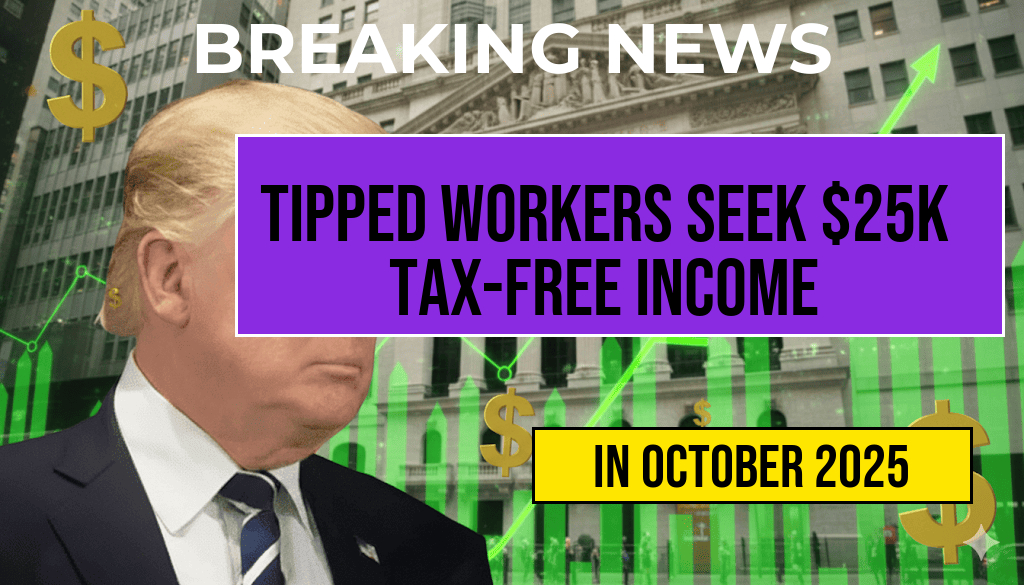Low-Wage Workers Could See Over $3,000 Annual Increase in 2026 Budgets via Tips and OT Shields
Recent analyses suggest that low-wage workers across various sectors could potentially boost their annual earnings by more than $3,000 in 2026, primarily through a combination of increased tips and overtime (OT) protections. This development stems from proposed policy adjustments that aim to better shield workers from unpredictable income fluctuations while incentivizing tip-based earnings. If implemented, these measures could significantly impact workers in hospitality, retail, and gig economy roles, providing a more stable revenue stream and improving overall financial security. The potential income boost hinges on two key elements: the expansion of tip sharing allowances and the introduction of OT shielding policies that prevent earnings from being clawed back during slow periods. This article examines the mechanics behind these proposals, their projected financial impact, and what they could mean for millions of low-wage earners across the country.
Understanding the Proposed Policy Changes
The core of the upcoming reforms involves two intertwined components: an increase in tip sharing caps and the implementation of OT shields designed to protect workers’ earnings from fluctuations caused by overtime pay adjustments. Currently, many workers rely heavily on tips, which can vary dramatically depending on seasonal demand, customer generosity, and economic conditions. Meanwhile, overtime protections often lead to complex calculations that may inadvertently reduce total compensation during periods of high overtime work.
Under the new proposals, employers would be permitted to expand tip-sharing arrangements, thereby allowing workers to receive a larger portion of gratuities pooled from multiple establishments or employees. This move aims to formalize and increase tip distribution, effectively raising workers’ gross income. Simultaneously, OT shields would cap the amount of earnings that can be offset or deducted during periods of overtime, ensuring that workers retain a predictable and fair income regardless of fluctuating hours.
Projected Financial Impact on Workers
| Income Source | Potential Increase | Details |
|---|---|---|
| Tips | $2,000 – $2,500 | Enhanced tip pooling and sharing reforms could lead to higher tip receipts, especially in service sectors with high customer generosity. |
| Overtime Shields | $1,000 – $1,500 | Caps on OT deductions would prevent earnings from being reduced during busy periods, adding stability. |
Combining these sources, low-wage workers could see a total annual increase exceeding $3,000. For many, this represents a significant step toward financial stability, particularly in sectors where tip income and overtime hours are primary income drivers. The cumulative effect of these reforms could also influence local economies by increasing consumer spending, as workers gain more disposable income.
Sector-Specific Impacts and Broader Implications
The hospitality industry, including restaurants, bars, and hotels, stands to benefit substantially from the reforms. According to estimates from labor advocates, tipped workers in these sectors could experience an average increase of roughly $2,500 annually through expanded tip-sharing policies alone. Retail and gig economy workers, who often rely on tips and variable hours, could see comparable gains, especially when OT shielding measures come into effect.
Beyond individual earnings, these policies could influence employer practices by encouraging more transparent and equitable compensation structures. Critics argue that increased regulation might impose additional compliance costs, but proponents contend that the benefits—more predictable income and improved worker morale—outweigh potential drawbacks.
Legal and Policy Context
The proposed adjustments align with ongoing efforts at the federal and state levels to modernize labor protections for low-wage workers. The Department of Labor has indicated openness to exploring reforms that acknowledge the realities of gig work and tip-based employment, as detailed in recent [federal guidelines](https://www.dol.gov/agencies/whd/state-and-local-guidance). States like California and New York have already implemented measures to improve tip pooling and OT protections, serving as models for nationwide policy shifts.
However, some industry groups express concern about the administrative burden these changes could impose. They argue that inconsistent application across jurisdictions may create confusion and compliance challenges. Nonetheless, advocates emphasize that establishing clear, standardized rules will ultimately benefit both workers and employers by fostering a fairer labor environment.
Looking Ahead
The coming years will reveal how these proposals are adopted and implemented. If successful, increased earnings could elevate low-wage workers’ annual budgets by over $3,000, transforming their economic outlook. As policy debates continue, the focus remains on creating a more equitable system that recognizes the vital contributions of service and gig workers while offering them greater financial security.
Frequently Asked Questions
What is the potential financial benefit for low-wage workers by 2026?
Low-wage workers could see an increase of over $3,000 in their annual budgets by 2026, primarily through tips and overtime shields.
How can tips contribute to increased earnings for low-wage workers?
Workers could earn up to $25,000 in tips, significantly boosting their overall income and helping improve their financial stability.
What are OT shields and how do they impact workers’ earnings?
OT shields are policies that protect workers from losing overtime pay benefits. They can add up to $12,500 in additional earnings, ensuring fair compensation for overtime hours.
Which sectors are most likely to benefit from these increased earnings in 2026?
Sectors with high levels of tipping and overtime work, such as hospitality, retail, and food service, are expected to benefit the most from these changes.
What policy changes are driving these potential earnings increases for low-wage workers?
Recent policy adjustments aim to enhance wage protections, increase tip transparency, and implement overtime shields, collectively contributing to the projected income boost for low-wage workers by 2026.










